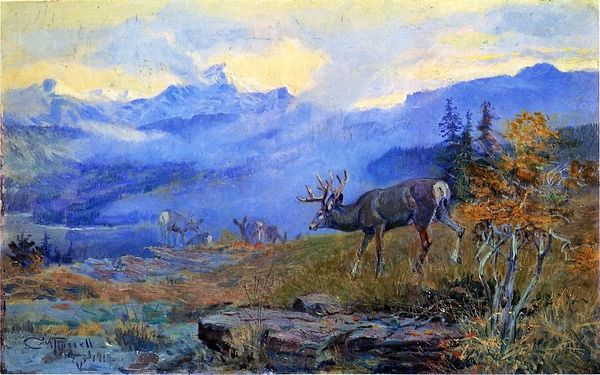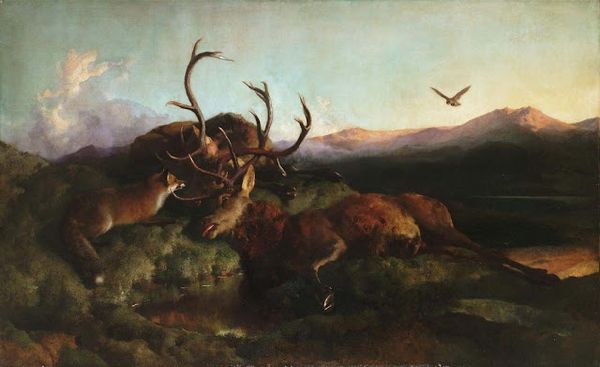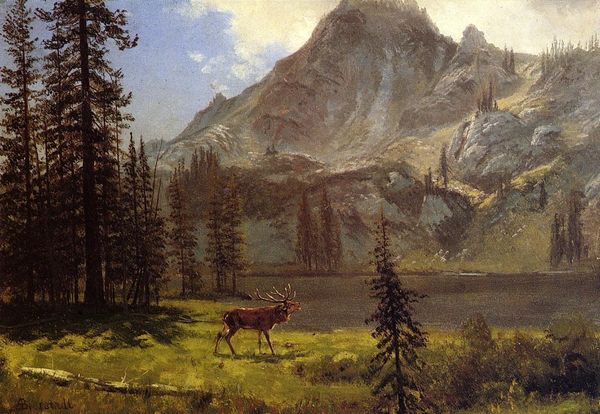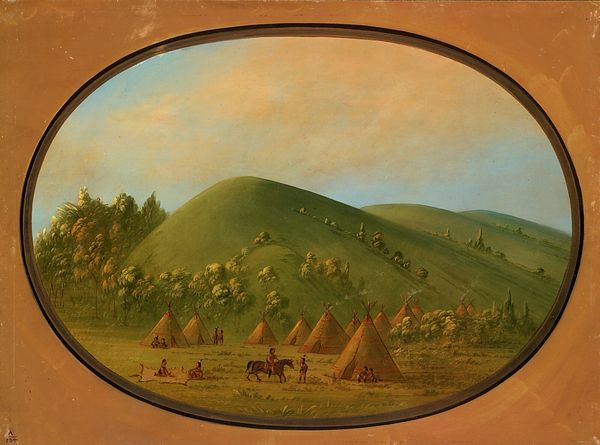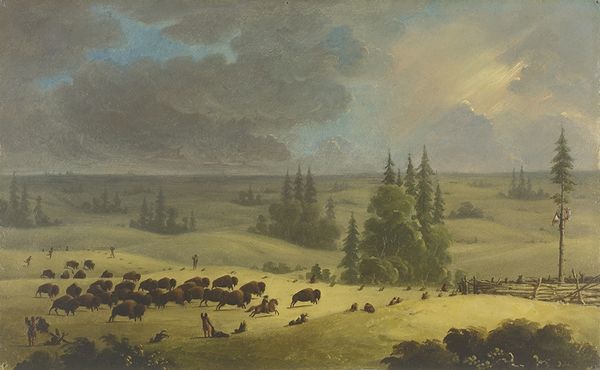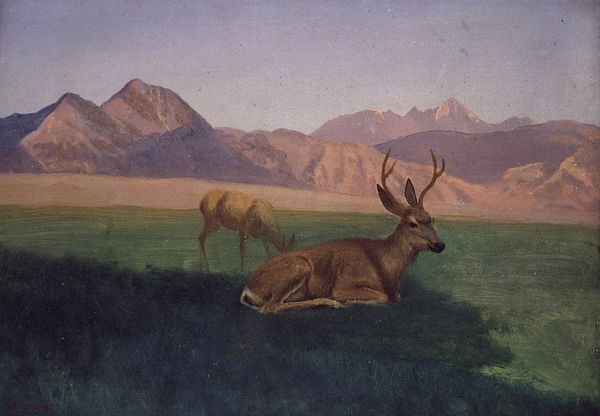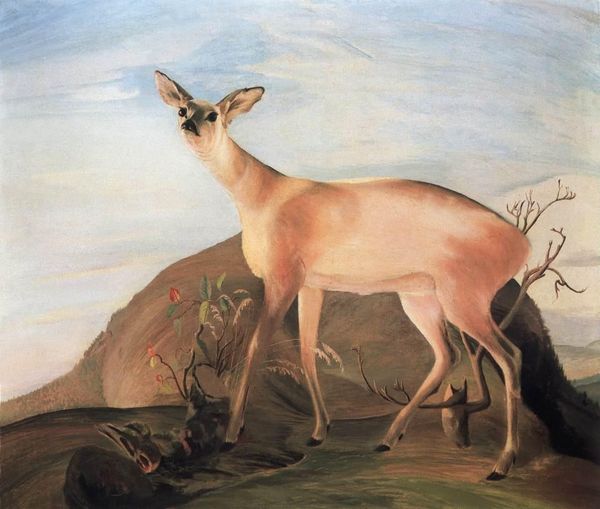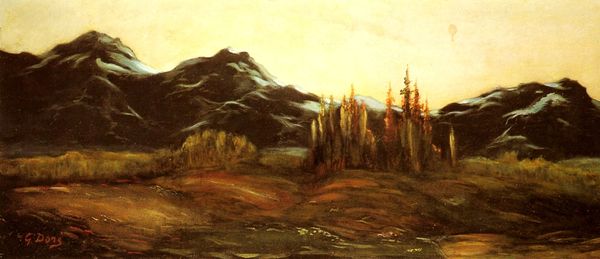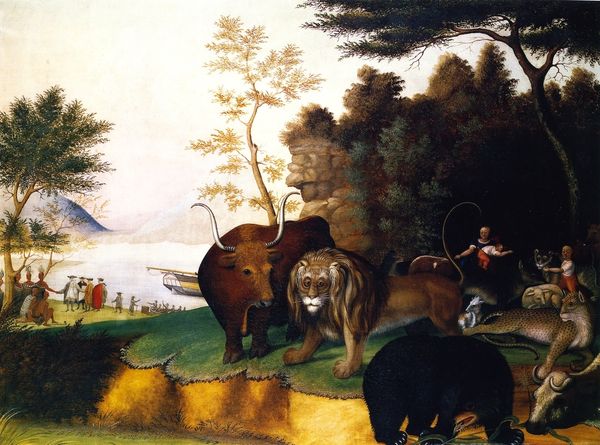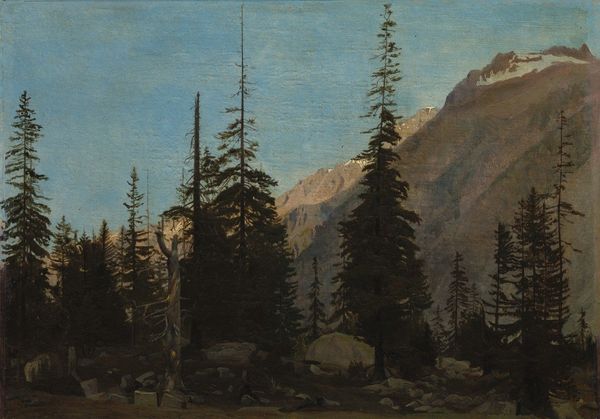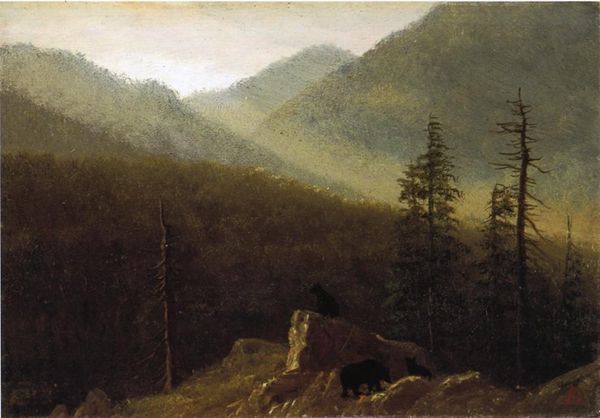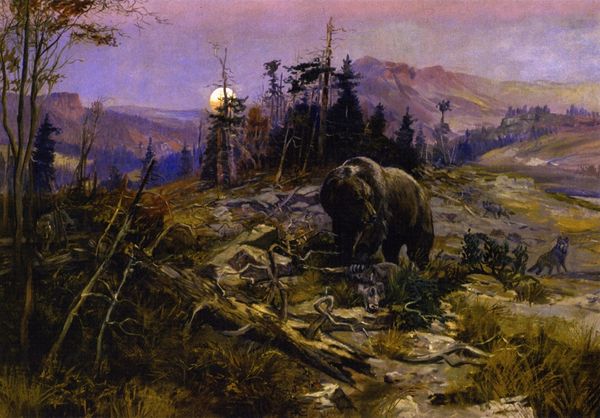
Copyright: Public domain
Curator: This tripartite painting, "Western Scene," was completed in 1885 by Charles M. Russell. It appears to be oil on canvas. The eye is immediately drawn to its panoramic effect. Editor: Absolutely. And within that panoramic view, it’s the stark division, those clear thematic triptych panels, that first captures my attention. The effect almost feels like three acts in a play – there's conflict on the left, nature's seeming detachment at center, and open range on the right. Curator: The artist has constructed a pictorial narrative with distinct symbolic weightings, hasn’t he? The left section clearly represents confrontation, men fighting on horseback. Then a tranquil circular centerpiece portraying wildlife… Editor: But "tranquil" seems like an oversimplification. To portray a kind of idyllic Eden existing as its own circular vignette—aren’t we meant to understand it can’t contain the surrounding conflict? Doesn't this separation highlight themes of encroachment, cultural tension? Curator: The composition indeed invites us to read it beyond mere illustration. The men’s clash might symbolize broader struggles over resources and territories; in the very center circle, we may have an archetype that embodies threatened existence. Consider the circular composition… a contained world on the verge of being shattered? Editor: Exactly, this sense of containment in art historically denotes something at risk or undergoing a transition, an era coming to a head. Also, look at the contrasting use of warm, agitated colors on the violent left versus cooler tones within and on the periphery— Curator: Highlighting, naturally, the serenity sought, yet already lost. The visual balance contrasts against a conceptual imbalance. Even the wide-open space occupied by only the grazing deer can be thought of as carrying its own symbolism… what future for unfettered movement? Editor: Or perhaps it’s Russell signaling what *could* exist. Hope represented, a different path forward for those conflicting energies? Curator: "Western Scene" delivers, ultimately, as more than a simple representation. It serves as an evocative representation of ideals, their challenges and inherent precariousness. Editor: Absolutely. This work encourages us to see history as a collection of these converging—often opposing—elements. It is up to us how to consider such oppositions; that it makes no judgements on which of these vignettes belongs only highlights the historical ambivalence around western expansion itself.
Comments
No comments
Be the first to comment and join the conversation on the ultimate creative platform.
